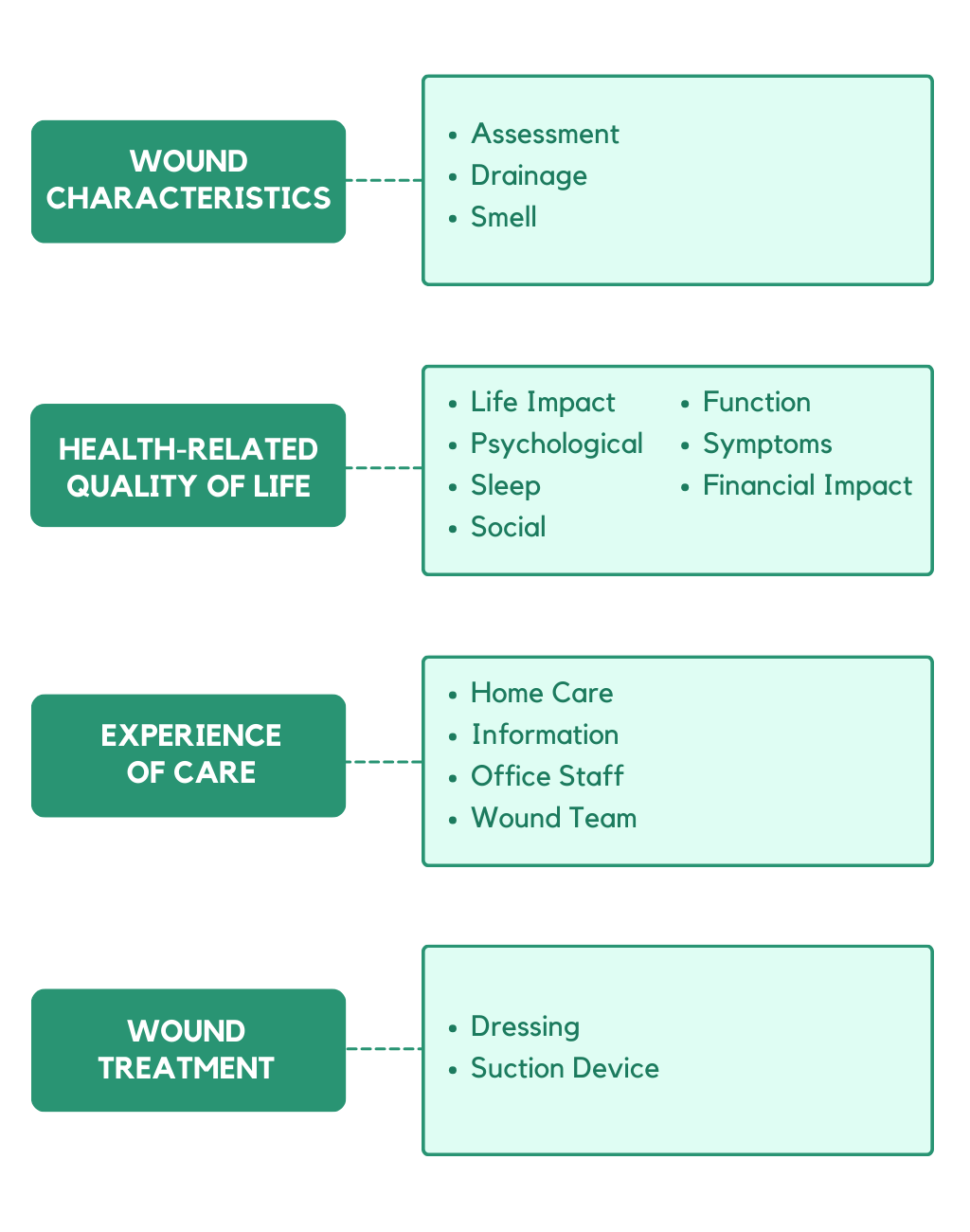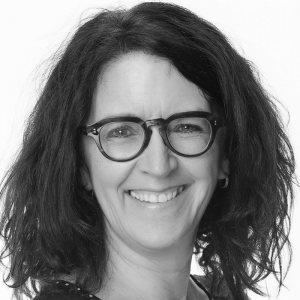Research
Can be used in research studies and clinical trials to study different approaches to treatments.
The WOUND-Q was developed from 60 concept elicitation interviews with patients with chronic wounds from 4 countries and input from 26 wound care experts. The WOUND-Q field-test recruited an international sample of 881 patients with chronic wounds. Further evidence of the reliability and validity of the WOUND-Q scales was provided in a new international study of 421 people with chronic wounds. The updated study added 3 new scales to the WOUND-Q to measure financial impact, function and symptoms.

The conceptual framework for the WOUND-Q covers 4 domains: wound characteristics, health-related quality of life, experience of care, and treatment. Each domain is composed of multiple independently functioning scales. The variety of scales provides flexibility to choose the subset of scales best suited to measure the outcomes of interest in any given study or clinical situation.
Can be used in research studies and clinical trials to study different approaches to treatments.
Carefully designed to meet the requirements of regulatory bodies.
Can be used to benchmark outcomes in quality improvement initiatives.
Designed using a modern psychometric approach to facilitate use in patient care.
Protocols for interventions to treat and prevent wounds have typically overlooked the patient perspective of outcomes and have focused instead on objective measures. The WOUND-Q is a rigorously developed patient-reported outcome measure that can be used with all types of chronic wounds in any anatomical location. The WOUND-Q measures 4 overarching domains. Each domain includes 2 or more independently functioning scales. Clinicians and researchers are able to administer the subset of scales relevant to their situation.
Three scales measure wound characteristics. The first scale measures how concerned someone is with their chronic wound(s) in the past week. The other two scales measure how bothered people are with drainage and smell.
Five scales in this domain are relevant to wounds in any location. These scales measure life impact, financial impact and how the wound(s) affects sleep, psychological, and social function. Two scales are specific to lower extremity wounds and measure function and symptoms.
Four scales measure patients’ experience of healthcare. The first scale measures satisfaction with information and the other three measure satisfaction with members of the health care team, i.e., home care nurses, wound team, and office staff in a wound clinic.
Two scales measure common treatments for chronic wounds. One scale measures satisfaction with dressing and the other scale measures satisfaction with the use of a suction device (e.g., vacuum pump device, negative pressure therapy dressing).


